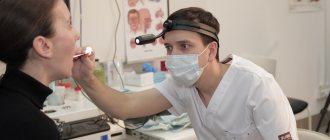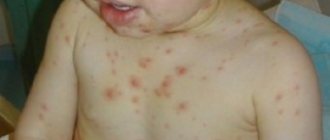Cancer is a disease that is caused by cell mutation. Cancer cells differ from healthy cells in that their cell cycle does not work properly. A healthy cell has several cycle stages:
- division;
- height;
- maturation;
- aging;
- dying off.
Cancer cells also divide, only at a faster rate. In addition, they may not die, forming clusters or tumors. They can form in the body of any person. But the general condition of the body and immunity plays a big role, since it depends on whether the body can independently overcome the development of the disease.
Types of cancer
Affected cells can occur in any human organ. Therefore, cancer can be called a group of diseases. The specific definition of the disease depends on which organs are affected:
- if the hematopoietic system is affected, it is leukemia;
- if the lymphatic system is affected, it is lymphoma;
- if nervous, connective or supporting tissue is affected, it is sarcoma;
- if the epithelial tissue of an organ is affected, it is carcinoma;
- if the skin is affected, it is melanoma.
There are also other types of cancer such as teratoma, glioma, choriocarcinoma, blastoma. Some types of cancer are less common, some more common. But this is the danger of rare species - they have not been studied so well, so they often lead to death.
Tumor assessment after surgery
Postoperative classification allows oncologists to assess the success rate of treatment performed through surgery:
- RX reports that it is not possible to assess the presence of tumor cells in the body after surgery;
- R0 states that there is no tumor in the body after surgery;
- R1 says that microscopic examination revealed residual tumor foci;
- R2 disappointingly reports that even without a microscope, a tumor is detected in the patient’s body.
How does cancer occur?
As mentioned above, cancer is nothing more than a malfunction of the cellular structure. Each cell of the body has a Heflick limit - this is a certain number of divisions that a cell can make, after which it dies. Due to a number of reasons, a cell may lose this limitation. Therefore, it begins to divide randomly and does not die.
As for fission, a certain amount of energy is spent on it. And if division occurs constantly, then more energy is expended. Because of this, the cell ceases to perform the functions that were originally assigned to it and becomes cancerous.
Cancers are also called malignant tumors. Their difference from benign ones is that the former, although they lose the Heflick limit, do not cease to perform their functions and do not change their structure. And in malignant tumors, cells change in structure and degree of development. Because of this, they can grow into other organs.
Cost of diagnostic procedures
| Oncological Check-Up basic | 44,000 rub. |
| Comprehensive Colono-Gastro program | 49300 rub. |
| Comprehensive diagnostic program EndoUS | 71,000 rub. |
| Appointment with a mammologist | 5100 rub. |
| Appointment with an oncologist | 5100 rub. |
| Digital videodermatoscopy Photofinder | 13400 rub. |
Book a consultation 24 hours a day
+7+7+78
What are the symptoms of cancer?
Oncological diseases in their initial stages affect one organ. But since the affected cells have the ability to rapidly divide, the disease affects not only the functioning of a particular organ or organ system, but also the body as a whole.
General symptoms of the disease:
- deterioration of the person’s general condition – appetite decreases, the person loses weight, feels weak;
- anemia – the color of the skin changes to paler, dizziness and fainting are observed;
- immunity decreases as the body fights cancer cells, which is why it cannot resist other infections and viruses;
- pain occurs, but this symptom appears in later stages of cancer;
- in case of serious diseases, liver function is disrupted, which is why the skin may turn yellow;
- inflammatory processes that are accompanied by high temperature;
- lymph nodes enlarge, as they are responsible for cleansing the body, but this symptom can occur both on the first and second
- last stage of cancer.
Prevention of cancer
Given the level of modern knowledge, including about the main risk factors for cancer, a significant part of cancer can be prevented. This requires, first of all, a high suspicion of cancer.
Cancer prevention should be carried out at various levels, including individually. First of all, this:
- minimizing the impact of carcinogenic factors - smoking, unfavorable environmental factors (working/living in a potentially hazardous area, contact with carcinogens);
- normalization of lifestyle - combating obesity, abuse of alcoholic beverages, physical inactivity, unhealthy diet, avoiding stress;
- competent contraception;
- timely treatment of precancerous diseases;
- limiting exposure to sunlight;
- systematic examination of various organs and systems of the body.
At its core, cancer prevention is all about living a healthy lifestyle. A balanced, balanced diet with a high content of natural products, including vegetables and fruits, is also of considerable importance in oncology. Fatty and fried foods, trans fats, fast food, sweets, and foods containing food additives (dyes, flavor enhancers, preservatives, nitrates) are subject to restrictions.
The role of medical institutions in the secondary prevention of oncology is no less important. They ensure increased public awareness of oncology issues, high-quality monitoring of risk groups, diagnosis and timely treatment of benign tumors and precancerous conditions.
Considering the particular importance of detecting cancer in the first stages, if any negative symptoms associated with malignant diseases appear, you should immediately consult an oncologist. Timely treatment is the key to effective cancer treatment and can save your life.
What are the causes of oncology?
In all the years of cancer research, the exact causes of this disease have not been identified. But oncological diseases have a fairly high connection with a number of factors called carcinogens (from the Latin cancer - cancer). These factors can be divided into several groups:
- Genetic. Research shows that a cell's DNA may contain certain defects that could cause that cell to lose its Heflick limit. Therefore, people whose relatives have had cancer are predisposed to this disease.
- Infectious. This group includes some viruses, against the background of which a disruption in the functioning of the body may occur. For example, the human papillomavirus can cause cervical cancer, herpes - various types of lymphomas, hepatitis B and C - liver cancer. This is due to the fact that these viruses “integrate” their genes into cellular DNA during their development.
- Chemical. This group consists of a number of substances that, when ingested, can penetrate the cell nucleus. This can cause DNA to interact with these substances.
- Physical. This group includes different types of radiation (ultraviolet, x-ray). They can destroy the shell of cell atoms, which leads to disruption of the structure of molecules and destruction of the DNA sector that is responsible for the Heflick limit.
- Hormonal. Due to hormonal disorders (excess or lack of hormones), the functioning of the endocrine glands is disrupted. Such changes in the body can lead to cancer of the mammary glands, prostate gland, thyroid gland and others.
- Immunological. This group of factors includes a decrease in the activity of T-leukocytes, which are responsible for fighting diseased cells that differ in structure from healthy ones.
Sources
- American Cancer Society. How is cancer diagnosed?. Last reviewed: January 30, 2016.
- de Martel C., Georges D., Bray F., Clifford GM Global burden of cancer attributable to infections in 2022: a worldwide incidence analysis. Lancet Global Health. 2022, 8 (2), e180-e190.
- Ferlay J., Ervik M., Lam F., Colombet M., Mery L., Piñeros M., et al. Global Cancer Observatory: Cancer Today. Lyon: International Agency for Research on Cancer; 2022.
- National Cancer Institute of the United States of America. What is cancer? Last reviewed: March 28, 2022.
- National Health Service. United Kingdom. Cancer. Signs and symptoms. Last reviewed: 17 September 2022.
- World Health Organization. Health topics. Cancer. Overview, Prevention, Management. Last review: March 3, 2022.
- Hanahan D., Weinberg R.A. Key signs of cancer: the next generation. Cell, 2011, 114(5):646−674. Per. from English: Azat Murtazin. Medach. 2011.
Methods of treating oncopathologies
Cancer is a serious disease, and when patients hear this diagnosis, they often immediately judge themselves. But cancer research is moving forward. Therefore, now we cannot say that this is a disease that necessarily leads to death.
There are several paths to recovery, the first of which is surgical. The tumor is removed to prevent diseased cells from continuing to grow. At the first stage of cancer development, surgical intervention can completely eliminate the further development of pathology.
Chemotherapy
– This is treatment with drugs that suppress the functioning of cancer cells. This causes them to stop dividing and the tumor stops growing.
Irradiation
is a type of treatment that uses high-energy rays that kill diseased cells. Used in conjunction with surgery and chemotherapy.
Hormonal treatment
used if the mammary glands are affected. This treatment suppresses the increase in the number of diseased cells.
Immunotherapy is also used
, during which the body’s immunity is stimulated to work. Through this treatment, the cells are destroyed by antibodies.
In addition, there is treatment with inhibitors that interact with proteins of diseased cells, causing them to stop dividing. Oncology treatment is individualized, and several methods are almost always used together.
The Clinic of Dr. Paramonov employs highly qualified oncologists and uses advanced methods and developments in the treatment of oncological pathologies. You can make an appointment with an oncologist by calling 8 (8452) 66-03-03.
Stages of malignant neoplasms
Based on the degree of aggressiveness of the disease and its spread throughout the body, there are 4 stages of malignant neoplasms.
Let's look at the signs of each of them:
- Stage 1 - the appearance of the first malignant cells, transformed from normal ones. The size of the pathological formation in diameter does not exceed 2 cm. It is difficult to diagnose and occurs without obvious symptoms. It responds well to treatment, in 95% of cases patients recover completely.
- Stage 2 - the tumor has already reached 5 cm, but metastases are rarely detected (individual malignant cells in the bloodstream or lymph nodes are possible). The patient’s general health is deteriorating, so one can suspect the disease and undergo the necessary examination in a timely manner. Successful treatment is achieved in 75% of cases.
- Stage 3 - the pathological formation enters the active growth phase and exceeds 5 cm in size. It affects neighboring tissues and organs, quickly spreading through the lymphatic and circulatory systems. Metastases are found in different areas of the body, which can be single or located in groups. The symptoms are pronounced, the functioning of the whole body is disrupted. Depending on the type of oncology, 25-50% of patients achieve success in treatment.
- Stage 4 - extensive damage by malignant cells, numerous and distantly located metastases that occur very quickly, despite the treatment. Therapy is aimed at maximizing the patient's life and relieving symptoms.
The stages of malignant neoplasms are determined after a thorough examination and consultation with an oncologist.









